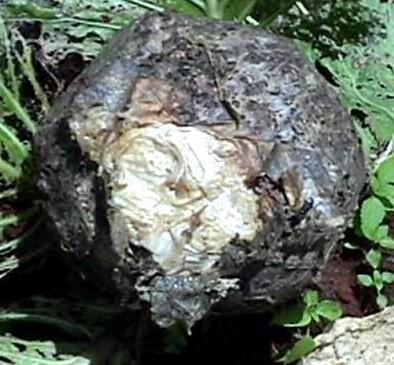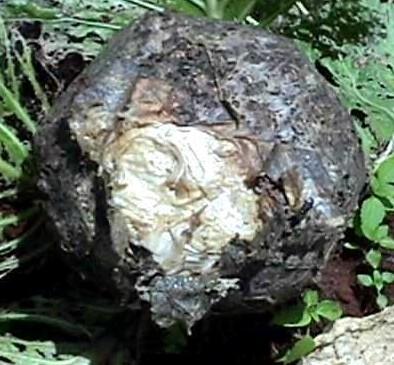

Bacterial soft rot (Erwinia carotovora var. carotovora)
Bacterial soft rot is caused by Erwinia carotovora var. carotovora. It is quite common on Chinese cabbage in the field. On cabbage, turnip and rutabaga the disease may be found in the field, but is most severe during storage. On cabbage, an initial infection occurs on the outer petiole (leafstalk) which is in contact with the soil, and then progresses to its head. An infected head is watery and often has a complete head rot. The affected area becomes soft and mushy and generally turns dark in colour. Soft rot infection on crucifers almost always emits a foul odour. Eventually the leaves, sterns and roots are entirely decayed by the bacteria. The bacterium is spread in the field by water splashes or contact with tools such as hoes or knives. If contaminated knives are used to harvest cabbages, the stored crop may also rot quickly.
- Plant on ridges or raised beds to prevent waterlogging around the plants.
- Prevent other diseases (e.g. black rot; damping-off) or damage that may provide opportunities for soft rot to develop.
- Avoid harvesting when conditions are warm and moist. These conditions favour the development of soft rot.
- Harvest healthy cabbage heads first and store in a cool, dry, airy place.
- Wash hands and harvesting knives.
- Remove and destroy diseased crop or left over stems in the field after the crop has been harvested.
- Avoid growing brassica crops in the same field for a period of at least three seasons.
